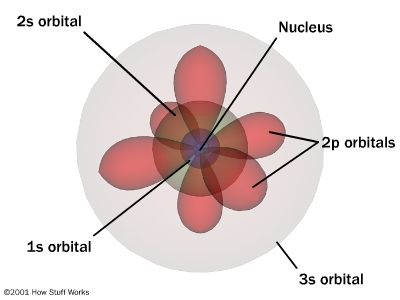From the fields of QED and quantum chromodynamics, or QCD, the field of physics that describes the interactions between subatomic particles and nuclear forces, we see that many of the forces are transmitted by objects exchanging particles called gauge particles or gauge bosons. These objects can be quarks, protons, electrons, atoms, magnets or even planets.
So how does exchanging particles transmit a force? Consider two ice skaters standing at some distance apart. If one skater throws a ball to the other, the skaters will move farther away from each other. Forces work in a similar way.
Physicists have isolated the gauge particles for most of the forces.
- The strong force uses pions and another particle called a gluon.
- The weak force uses W and Z bosons.
- The electromagnetic force uses photons.
- Gravity is thought to be conveyed by a particle called a graviton; however, gravitons haven't been found yet.
Some of the gauge particles associated with the nuclear forces have mass, while others don't (electromagnetism, gravity).
Because electromagnetic force and gravity can operate over huge distances like light-years, their gauge particles must be able to travel at the speed of light, perhaps even faster for gravitons.
Physicists don't know how gravity is transmitted. But according to Einstein's theory of special relativity, no object with mass can travel at the speed of light, so it makes sense that photons and gravitons are massless gauge particles. In fact, physicists have firmly established that photons have no mass.
Which force is the mightiest of them all? That would be the strong nuclear force. However, it acts only over a short range, approximately the size of a nucleus. The weak nuclear force is one-millionth as strong as the strong nuclear force and has an even shorter range, less than a proton's diameter.
The electromagnetic force is about 0.7 percent as strong as the strong nuclear force but has an infinite range because photons carrying the electromagnetic force travel at the speed of light. Finally, gravity is the weakest force at about 6 x 10-29 times that of the strong nuclear force. Gravity, however, has an infinite range.
Physicists are currently pursuing the idea that the four fundamental forces may be related and that they sprang from one force early in the universe. The idea isn't unprecedented. We once thought of electricity and magnetism as separate entities, but the work of Oersted, Faraday, Maxwell and others showed that they were related.
Theories that relate the fundamental forces and subatomic particles are called fittingly grand unified theories. More on them next.






